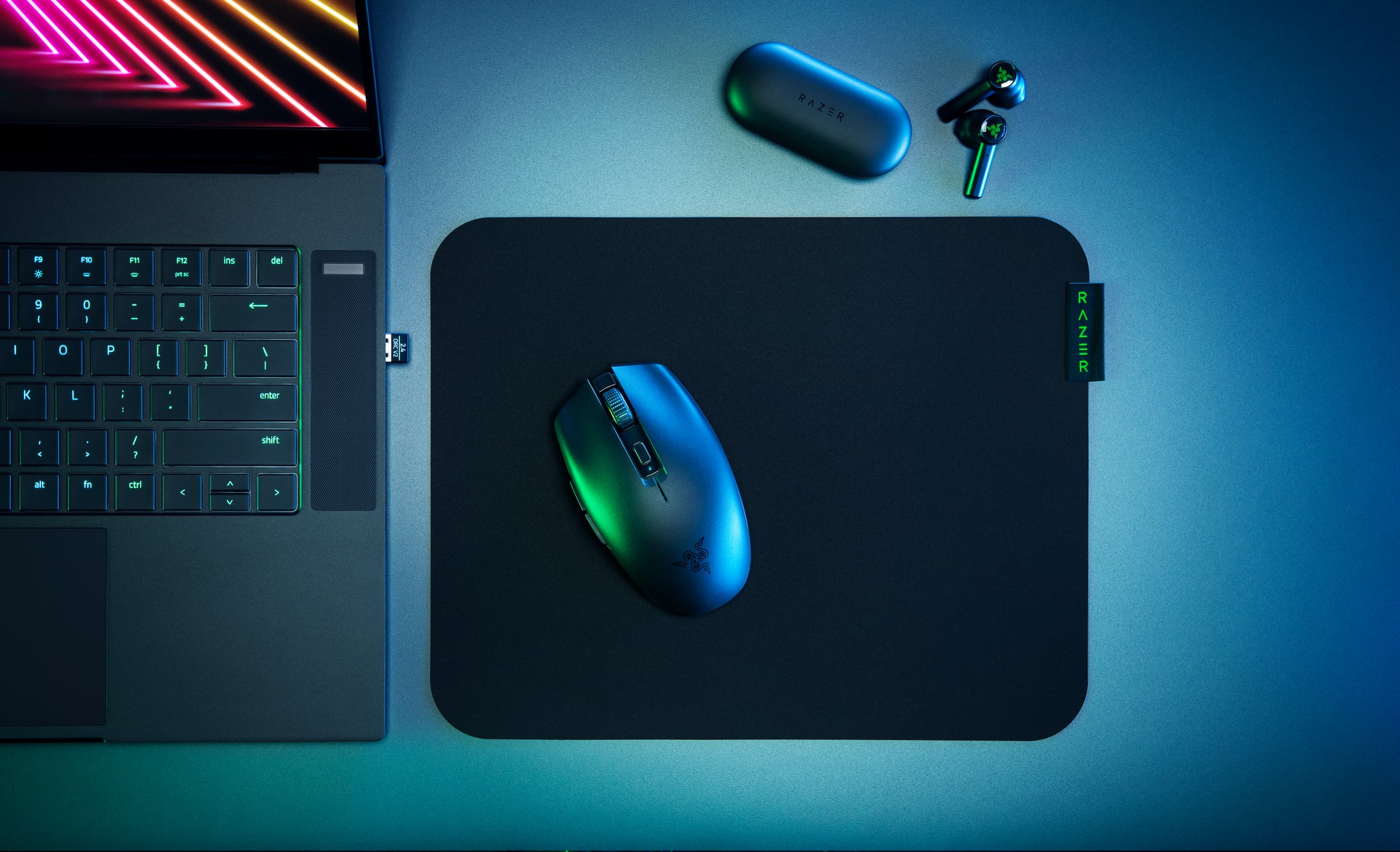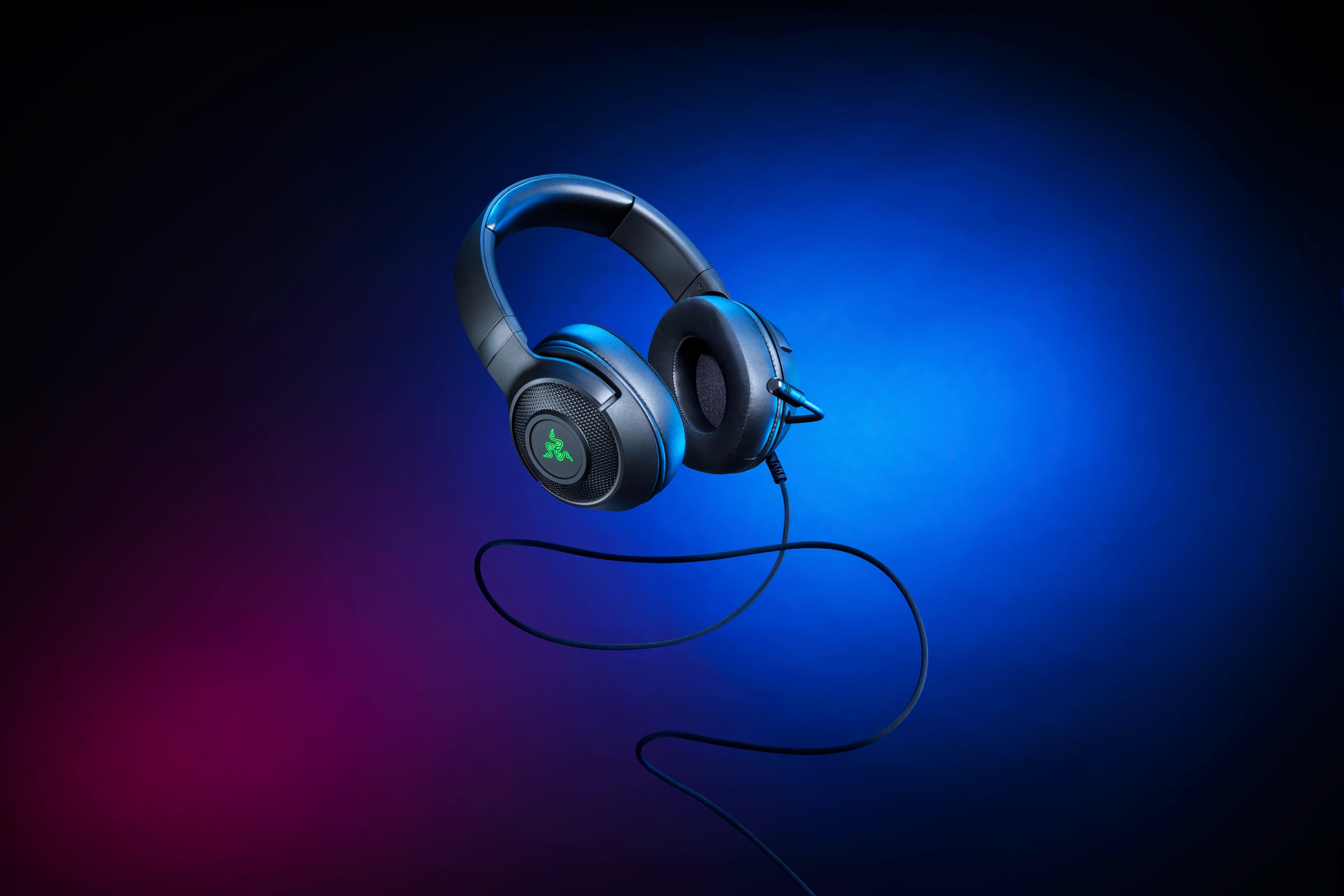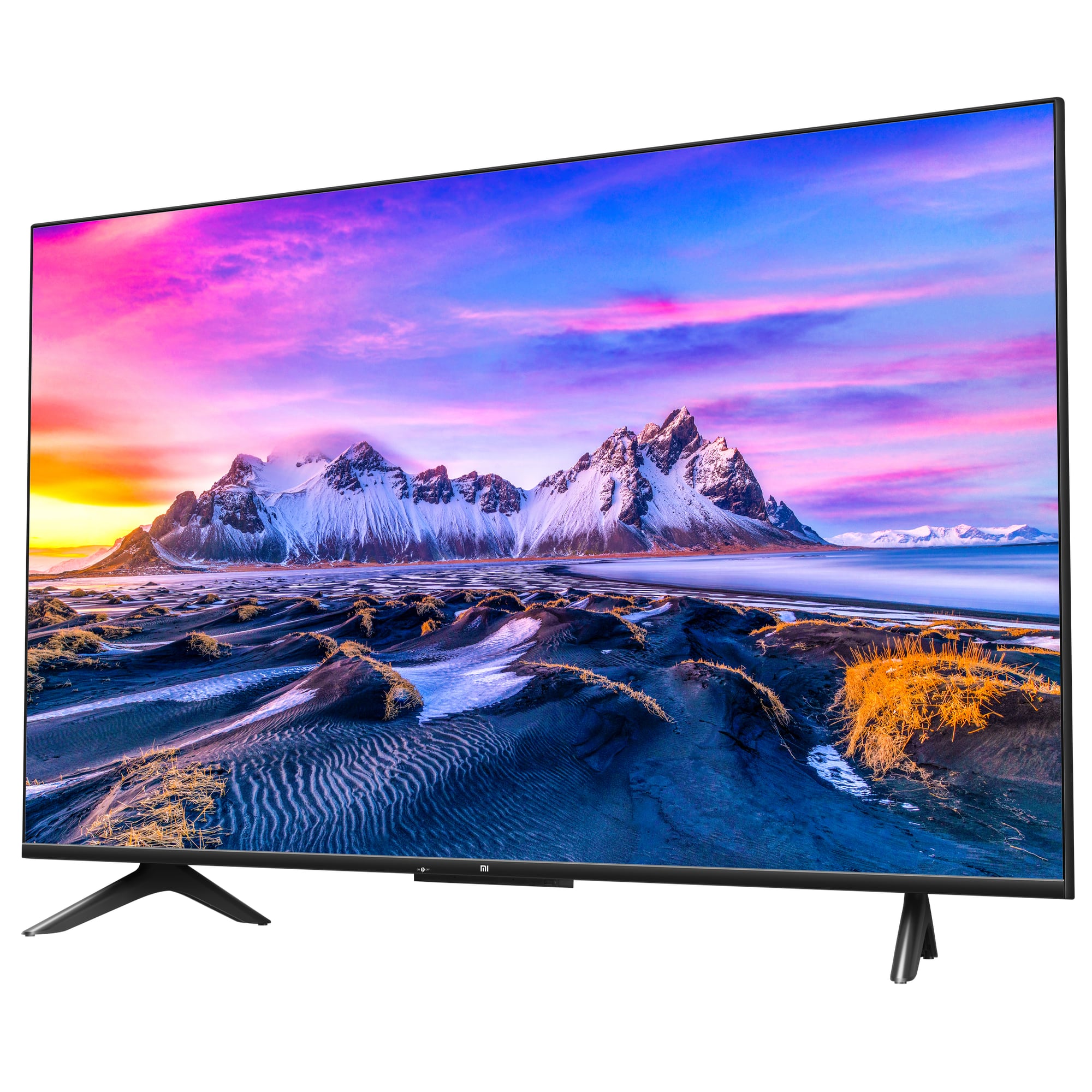
The Razer Orochi V2, as its name implies, is the successor to the gaming company’s original pocket mouse launched way back in 2013.
SPECS
PRICE: From $104.90 (available in Razer Store)
SENSOR: Razer 5G advanced optical
MAXIMUM SENSITIVITY: 18,000 dots per inch
MAXIMUM SPEED: 450 inches per second
CONNECTIVITY: Bluetooth, 2.4GHz
WEIGHT: 60g (without battery)
DESIGN
Targeted at laptop gamers who are on the move, the Orochi V2 offers wireless connectivity via Bluetooth or 2.4GHz USB wireless dongle. At the mouse’s bottom, you will find a switch that toggles through Off, 2.4GHz and Bluetooth connectivity.

The new mouse has grown in size over its predecessor with a longer body and a more pronounced bulge on its top. This bulge tapers to the rear end for better grasp to the back of your palm, whether you are using claw grip or palm grip.

Despite the increase in size, the Orochi V2 is smaller than an iPhone 12 mini. And it should easily fit into the pockets of your backpack or bag. It has six buttons, including the two main click buttons, scroll wheel, sensitivity button on the top and two side buttons on its left.

However, the Orochi V2 lacks the two side buttons on the right found in the original. Thus, while the V2 has a symmetrical design, it is catered more to right-handers.
FOR
+ Lightweight
+ Better grip than its predecessor
+ Stable Bluetooth and 2.4GHz connectivity
+ Long battery life
AGAINST
– No wired connection
– No carry pouch
– No RGB lighting
In addition, it does not have wired option anymore. The original has a micro-USB port for wired connection.

The Orochi’s top plate is magnetically attached to the mouse and can be easily removed. When you remove it, you will find a storage for the 2.4GHz USB dongle. And interestingly, a slot for a AA battery and another slot for a AAA battery as well.
These two slots are designed diagonally to distribute weight more evenly than the original. But frankly speaking, I didn’t feel any difference compared to the original.

In case you are wondering if you can use both battery slots at the same time. The answer is no. You can only use one battery at any one time. So, you have to choose between weight and longer battery life.
I also like that there are no rubberised parts or buttons on this mouse. In Singapore’s humid climate, rubberised parts usually get “goo-ey” or sticky over time.
Then, the next thing you will notice is how light the mouse is. Without battery, it weigh only 60g. But with a AA battery, the weight can go up to 82g. Still, it is pretty lightweight.

PERFORMANCE
Inside the Orochi V2, it is armed with Razer’s 5G advanced optical sensor with a sensitivity of up to 18,000 dots per inch (dpi) and speeds up to 450 inches per second.
The Orochi V2 might be a gaming mouse, but I think most people will be using it as a work mouse for their laptops as well. If you want a more stable and less-laggy connection for gaming, it is more advisable to use 2.4GHz connection.
For work, you probably will want to switch to Bluetooth connection for longer battery life. Not to mention, you have no choice if your company laptop is an Apple MacBook Pro with USB-C ports only.
In this review, I tested the mouse using Razer’s new Sphex V3 mouse mat with my desktop gaming rig (on 2.4GHz connection) and my work MacBook Pro (on Bluetooth). And the mouse performance on both machines is superb.

At only 1,600 dpi sensitivity, the mouse glides around with ease on the mouse mat allowing you to easily aim and kill your enemies in games like Cyberpunk 2077 or Doom Eternal.
Thus, using the Orochi V2 for work is a breeze. You can literally scroll through your presentations with ease and browse the Internet like a walk in the park.
BATTERY LIFE
With a AA battery, the Orochi V2 is rated to last up to 425 hours on the 2.4GHz connection or 950 hours on Bluetooth.
Using a AA battery, I found no dip in the battery level after a week of use. This was with around 5 to 6 hours of usage every day paired with my MacBook Pro on Bluetooth, in addition to around 5 hours of gaming with my desktop PC on 2.4GHz. In any case, you probably can find AA or AAA batteries easily even when the mouse runs out of juice. That probably will be months later.
But one reason for its long battery life is its lack of RGB lighting. Almost a blasphemy for a Razer mouse not to have RGB lighting! Jokes aside, I am more peeved that a pouch is not included. Something that came with the original Orochi.
VERDICT
Available in white and black (version reviewed), the Orochi V2 ($104.90) allows customisation with over 100 different designs – ranging from eSports teams to artists – through Razer Customs. You can even personalise the mouse with your gamer tag or name. But essentially, you are getting a customised top plate for $45 more.

Even at $149.90 for a custom model, the Razer Orochi V2 is still quite affordable compared to the likes of Logitech G Pro Superlight ($239).
Of course, you are not getting the pro-grade wireless gaming level. But overall, the Orochi V2 is a superb wireless pocket mouse for work and gaming leisure at a reasonable price.
RATING
FEATURES: 8/10
DESIGN: 8/10
PERFORMANCE: 8/10
BATTERY LIFE: 10/10
VALUE FOR MONEY: 8/10
OVERALL: 8/10






